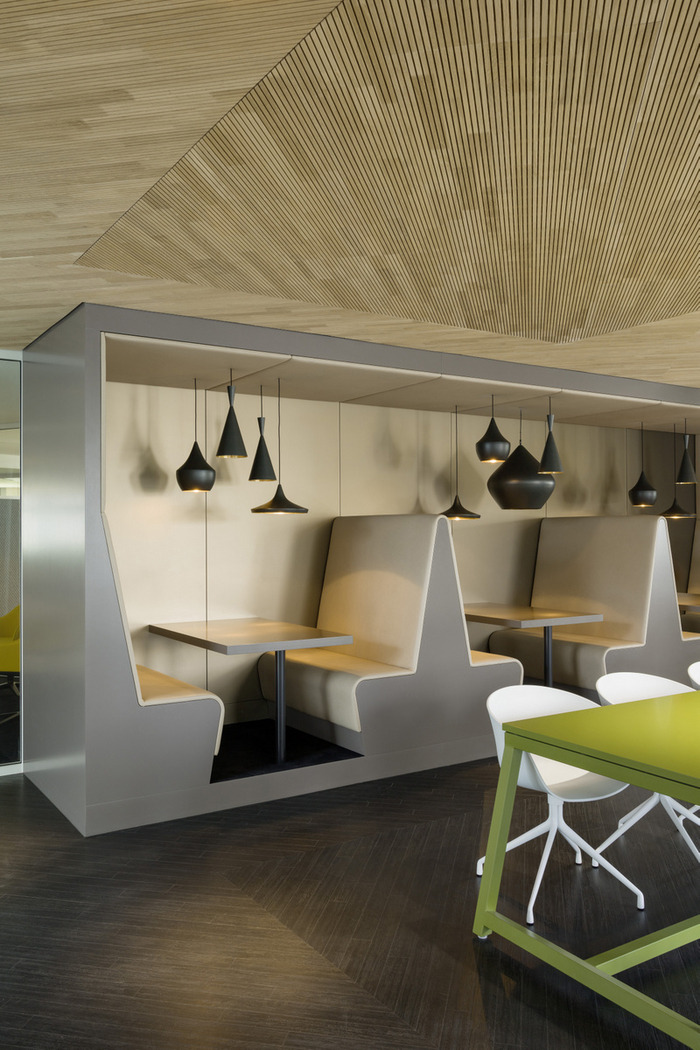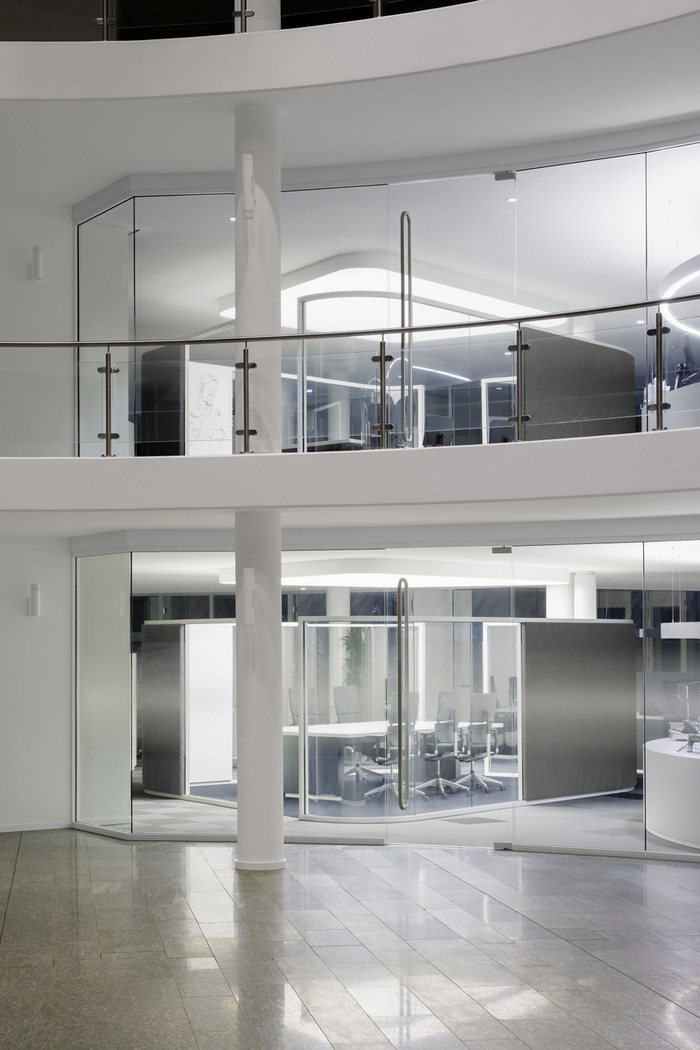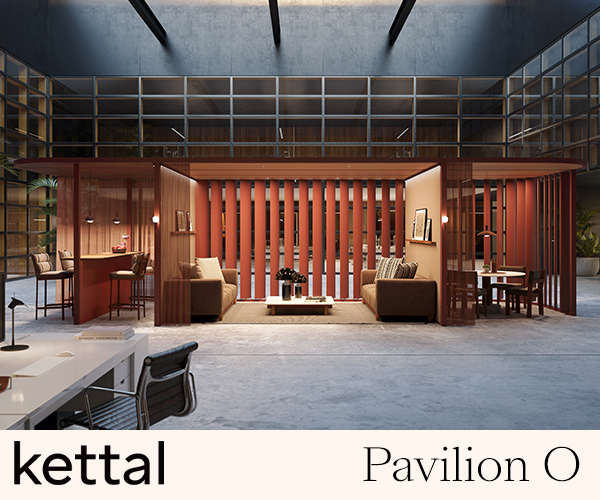
Inside Drees & Sommer’s Decentralized Stuttgart Offices
Ippolito Fleitz Group has completed the design of a new office space for international real estate and development consultancy Drees & Sommer. The new space allows for ad-hoc teams to quickly form and easily communicate by developing a non-territorial design program.
Given the large amount of time most employees spend outside the office, one aim was to break with the tradition of fixed workplace allocation and to establish a non-territorial workstation system. Height-adjustable workstations mean that the workplace can be adapted to each user. At the same time, optimum use is made of the available workspace. A mixture of separate individual offices and team workstations combined with open multi-functional zones and intimate work island retreats guarantees variable use of space. A varied and distinct range of communication zones meets the needs of different kinds of meetings. There is no room for conventional “departmental thinking” here. Employees work in a decentralised way and form cross-functional teams of experts, according to the situation. This promotes efficiency by shortening communication channels.
The new office world features flowing spaces zoned by freely positioned island retreats and waist-height functional elements for printers and fax machines. The offices – separate but open to view – are perceived as part of the overall space. The carpet with its pixelated pattern defines the table zones and circulation areas while simultaneously underlining the dynamic feel of the overall space.
The assistants’ working areas are located centrally at the heart of the space and can be allocated to the various teams. The semi-circular table shape underscores their special function in the room. The core zones, with integrated adjoining rooms, are clad floor to ceiling with an all-round wall unit combining storage space, lockers, a central kitchenette, and the air-conditioning and ventilation systems. The warm acacia wood surface provides a pleasant contrast to the more neutral colour palette of the partition walls and furniture.
The marketplace creates a central communication hub in the building that, like the in-house cafeteria, provides a space in which to take breaks, as well as being a setting for informal discussions and meetings with customers. An elongated compartment contains three booths, each seating up to four, for private conversations. In front of this is a long table for larger team meetings or sociable breaks. The bar counter separates the kitchen from the room and provides an opportunity for relaxed chats over a cup of coffee. Smaller two-person tables for quick breaks and a lounge area round out the varied and versatile seating arrangements. The terrace outside this space expands the room into the office campus’ central inner courtyard.
The depth of the room and the resultant difficulty of illuminating it with natural light are counteracted by a sophisticated light and material concept. The decreasing intensity of daylight is balanced out by an inverse bright-to-dark progression in the carpet pattern. The core area, with its acacia wood cabinet fronts, is activated as a vertical sheet of light by means of an illuminated LED strip integrated into the ceiling. The mixture of concentrated light above doors and dispersed light in the zones of movement ensures a varied yet function-specific lighting atmosphere.
The continuous wall-to-wall carpeting and suspended perforated ceiling grid integrate sound-absorbing surfaces into the building. In the more frequented circulation areas around the core, all the cabinet fronts and wall cladding are made of perforated acoustic boards. In addition, fabric-covered panels between the individual workstations absorb noise emissions right at the source. Deep-pile carpeting ensures pleasant acoustics in meeting rooms. In the marketplace – the most intensively used communication zone – a highly absorbent ceiling of wooden slats complements and further improves the atmosphere and acoustics.
With the transformation of this office building, Drees & Sommer completes its own transformation toward a new working philosophy. The move away from a fixed workplace to a “non-territorial office” is fitting for a contemporary working environment in which flexible working hours and attendance times, as well as fluctuating team sizes, have become commonplace. This conversion of a 20-year-old building is a good example of the challenges facing countless properties due to the needs of a communicative working environment, today and tomorrow.
Design: Ippolito Fleitz Group
Photography: Zooey Braun






















































